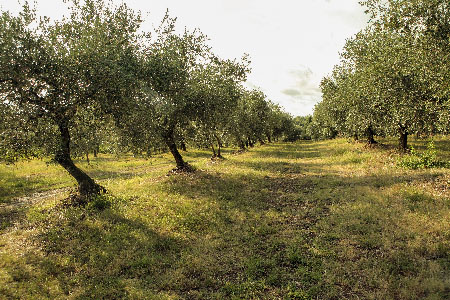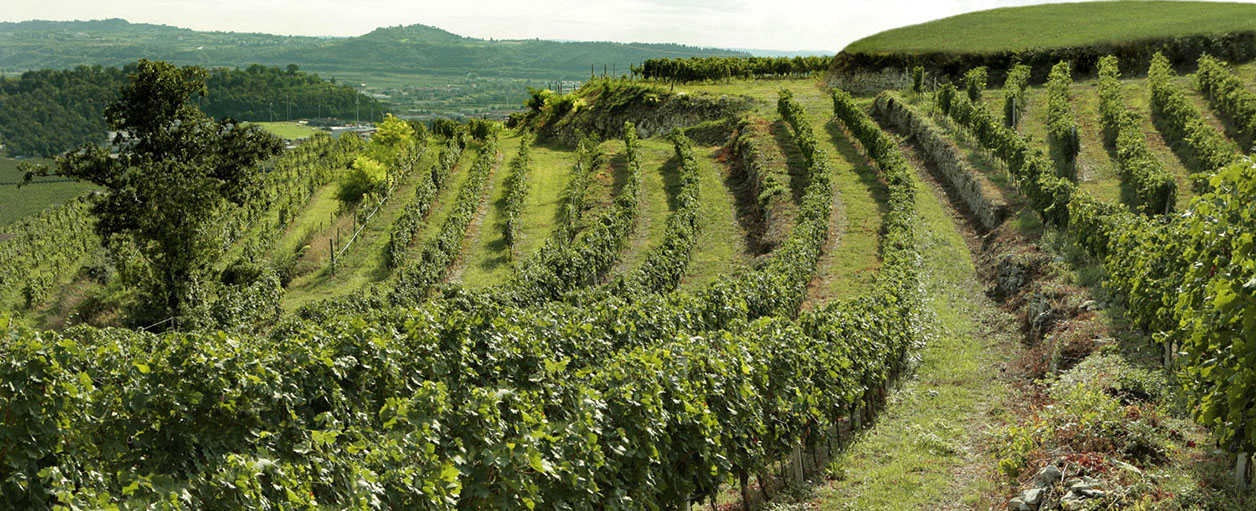ELEVA VINEYARDS
Six hectares in a single body: 18 terraces dedicated to vines and olive trees, supported by the traditional dry stone walls of Valpolicella. Framed by forest and sloping toward the plain, here are the vineyards of Eleva, in Conca d’Oro, in Sant’Ambrogio di Valpolicella.
To the north, the Lessini Mountains offer a bulwark that protects against the coldest winds, while to the southwest the mild temperatures of Lake Garda help create an ideal microclimate for growing vines and olive trees. As early as the early 19th century, the locality was known by the name La Palà, in some mappings. This is a dialect term for the past vintners’ custom of supporting the newly planted rootstock with an earthen palà.
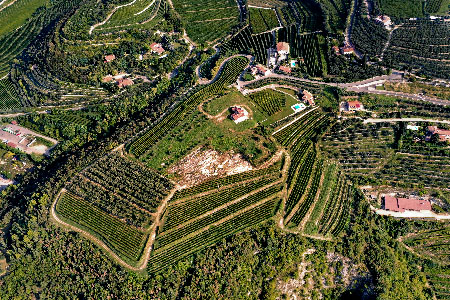
Soils
In this corner of Valpolicella, soils i are predominantly silty-clayey, red and brown on marl and limestone debris. The agrarian soil layer is not very thick and below it is a series of sedimentary rocks: yellowish-white limestones and calcarenites, thickly stratified pinkish marly limestones, and compact reddish-white limestones. This set of rocks, typical of Valpolicella, is a winning factor in its viticulture: in fact, rainwater, filtering into the lower layers of the soil, comes to corrode the limestone of the subsoil, while at the same time yielding moisture, microorganisms and freshness to the roots of the plants. In this way, the vines better withstand any summer droughts, reaching maturity in the best conditions.
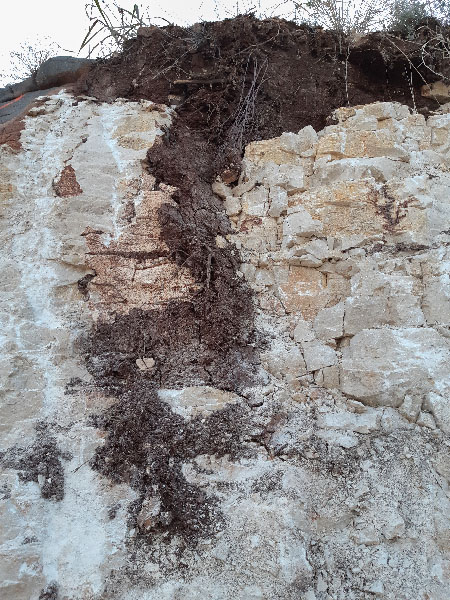
Vineyards
The organically managed vineyards are trained, low guyot and not very expansive. Density is 4200 vines per hectare with a 250 cm row spacing and 100 cm row spacing. The low bud load ensures excellent leaf exposure. Production ranges between 0.8 and 1.7kg of grapes per vine. Yields per hectare are therefore very low.
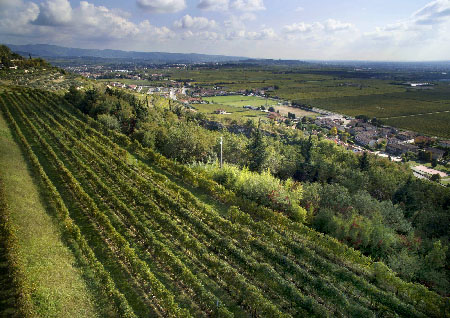
The grape varieties
The grape varieties grown on the estate are those typical of the area: Corvina veronese and Corvinone are the most present, accounting for 60 percent of the vines. They are followed by Rondinella (25%) and a group of other non-aromatic red grapes: Croatina, Teroldego, Oseleta and Merlot (15%). The average age of the vines ranges from 10 years (for Merlot and Teroldego) to 15 years (for all others).
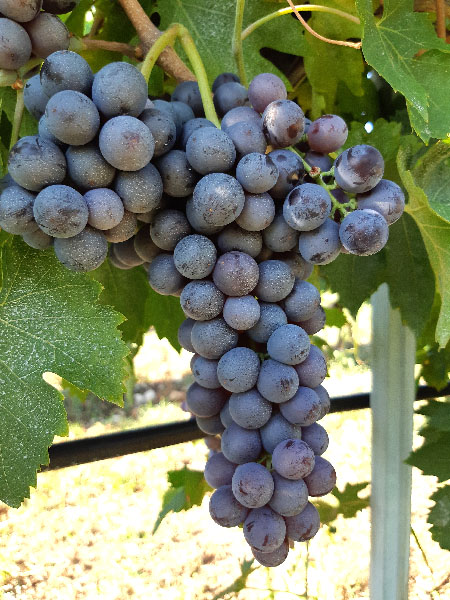
The olive trees
that share with the vines this beautiful corner of Valpolicella are of the typical varieties of this part of the province of Verona: Frantoio, Leccino, Grignano, Moraiolo and Favarol. Their olives, harvested in November, yield a fragrant and tasty but light oil, the perfect condiment for the best-known dishes of Veronese gastronomic tradition.
